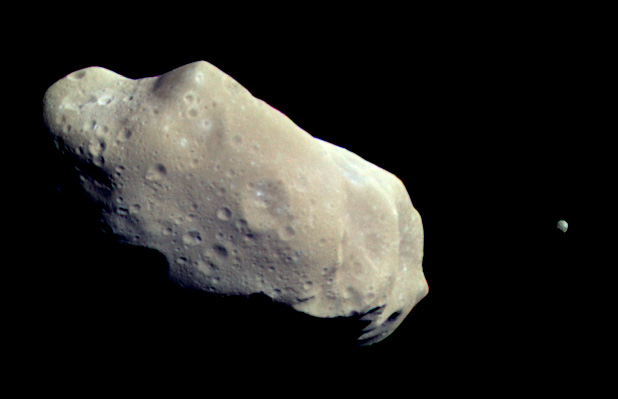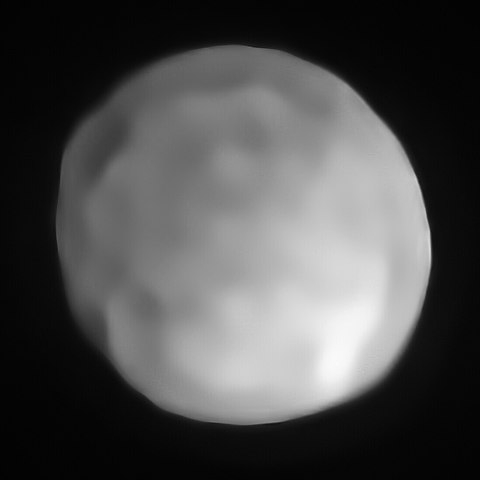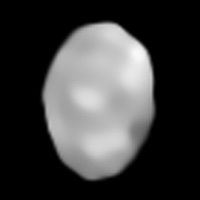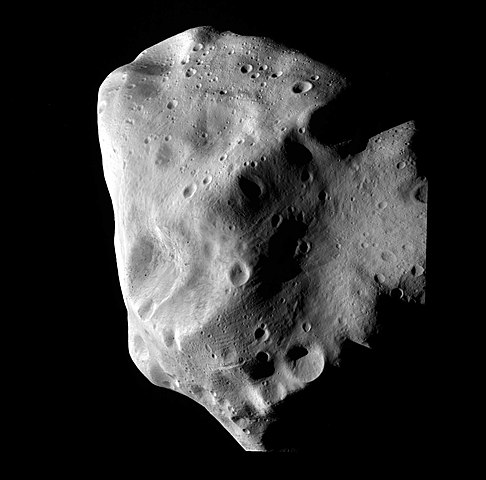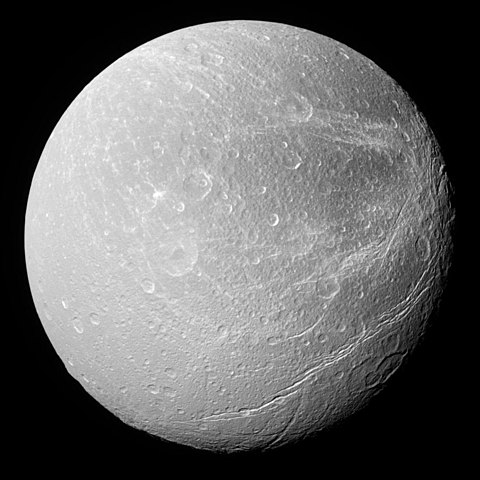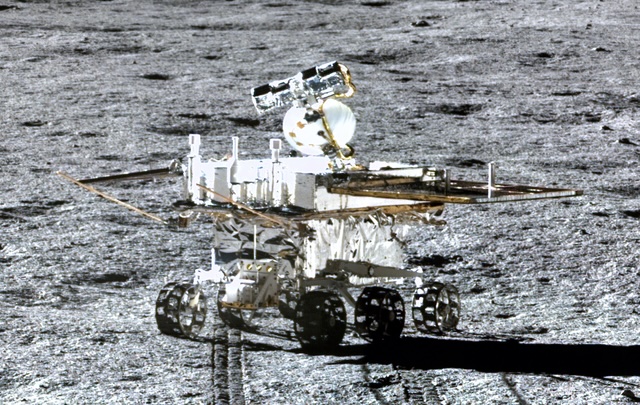1 day / second
0.5 AU
243 Ida
Asteroid
A S-type asteroid in the main belt discovered in 1884 that became the first asteroid found to have its own moon when Galileo photographed its companion Dactyl during a 1993 flyby.
Key Facts
orbital regime | Asteroid Belt |
learn more | Wikipedia |
mass | 4.2000e+16 kg |
radius | 15.7 km |
hill radius | 7,833.775 km |
semi-major axis | 2.86 AU |
eccentricity | 0.045 |
inclination | 1.13º |
longitude of the ascending node | 323.585º |
argument of periapsis | 114.128º |
orbital period | 4.837 years |
surface gravity | 0.001 g |
discovery date | September 29, 1884 |
discovered by | Johann Palisa at Vienna Observatory |
name origins | Named after Ida, a nymph in Greek mythology |
dimensions | 32 kilometers in diameter |
albedo | 0.262 |
material composition | S-type asteroid |
density | 2.6 grams per cubic centimeter |
Spacecraft Visits
Galileo
Flyby
Launched in 1989, visited in 1993
During its flyby on August 28, 1993, Galileo captured detailed images of the asteroid Ida from a distance of 2,400 kilometers, revealing it to be an S-type asteroid with an unexpected companion moon later named Dactyl.
